
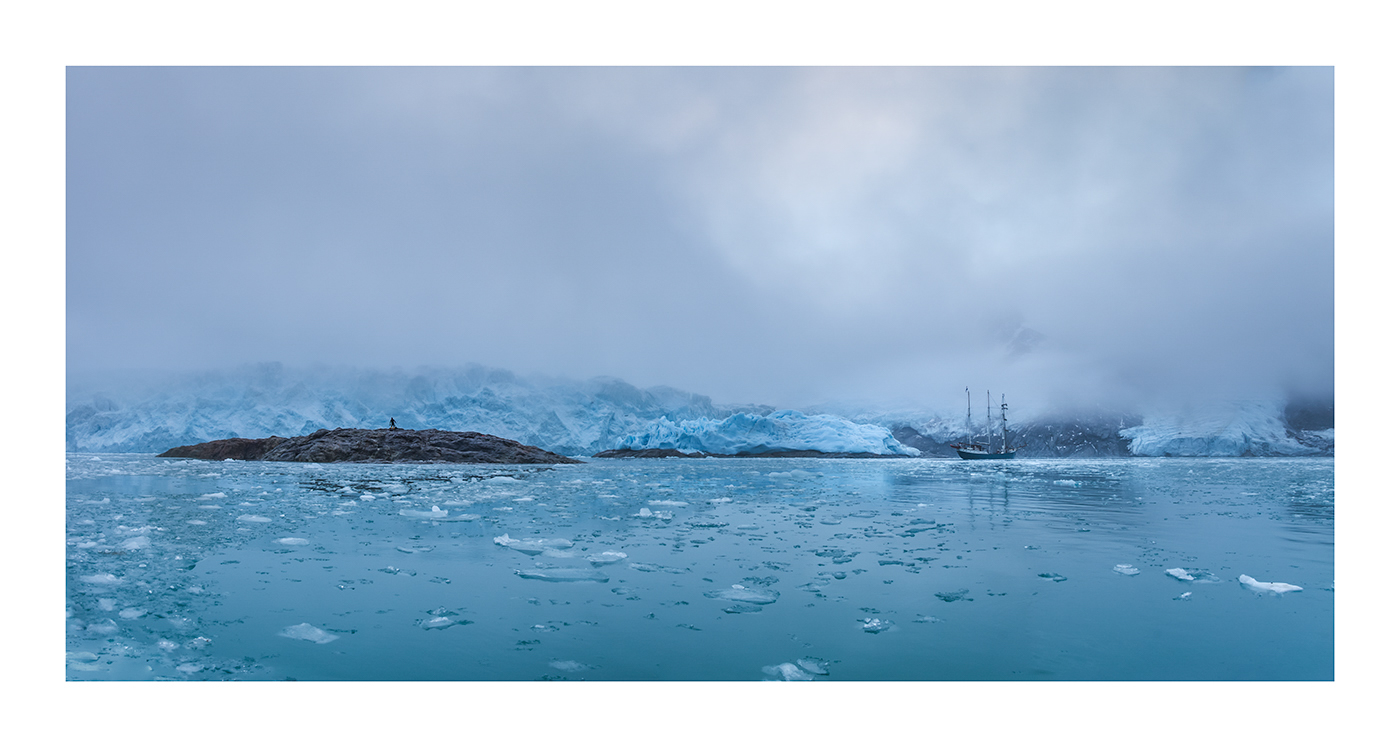
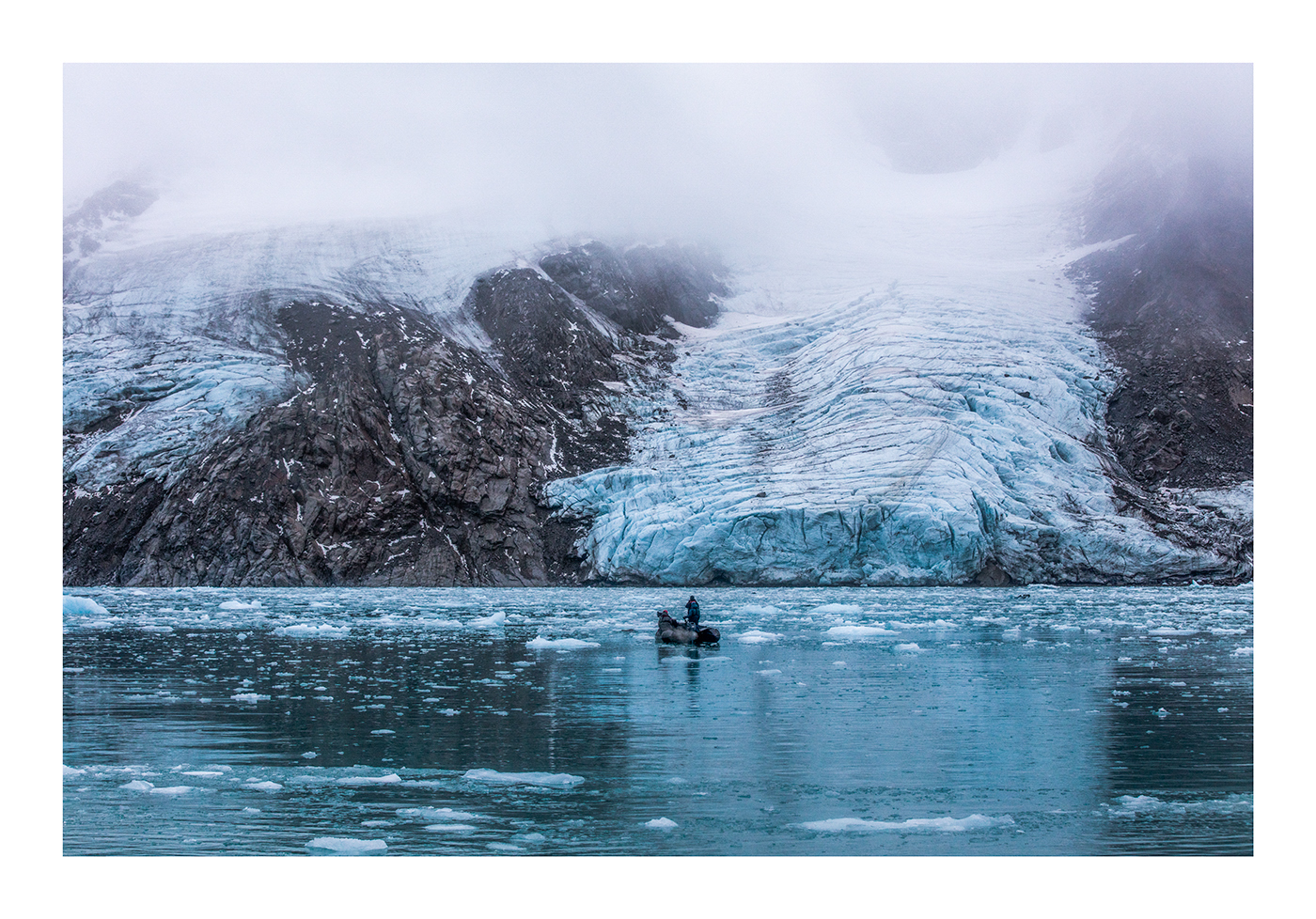
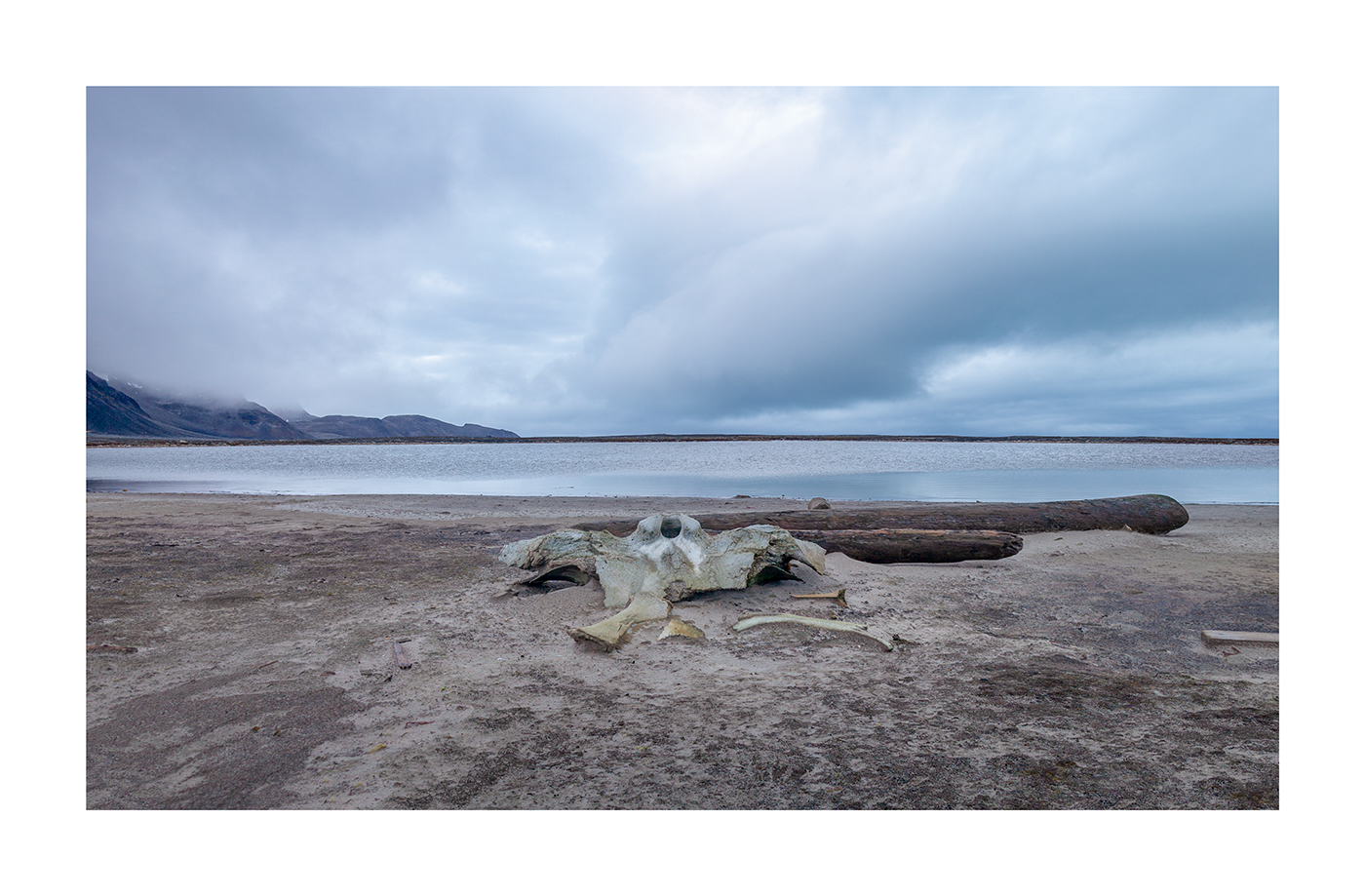
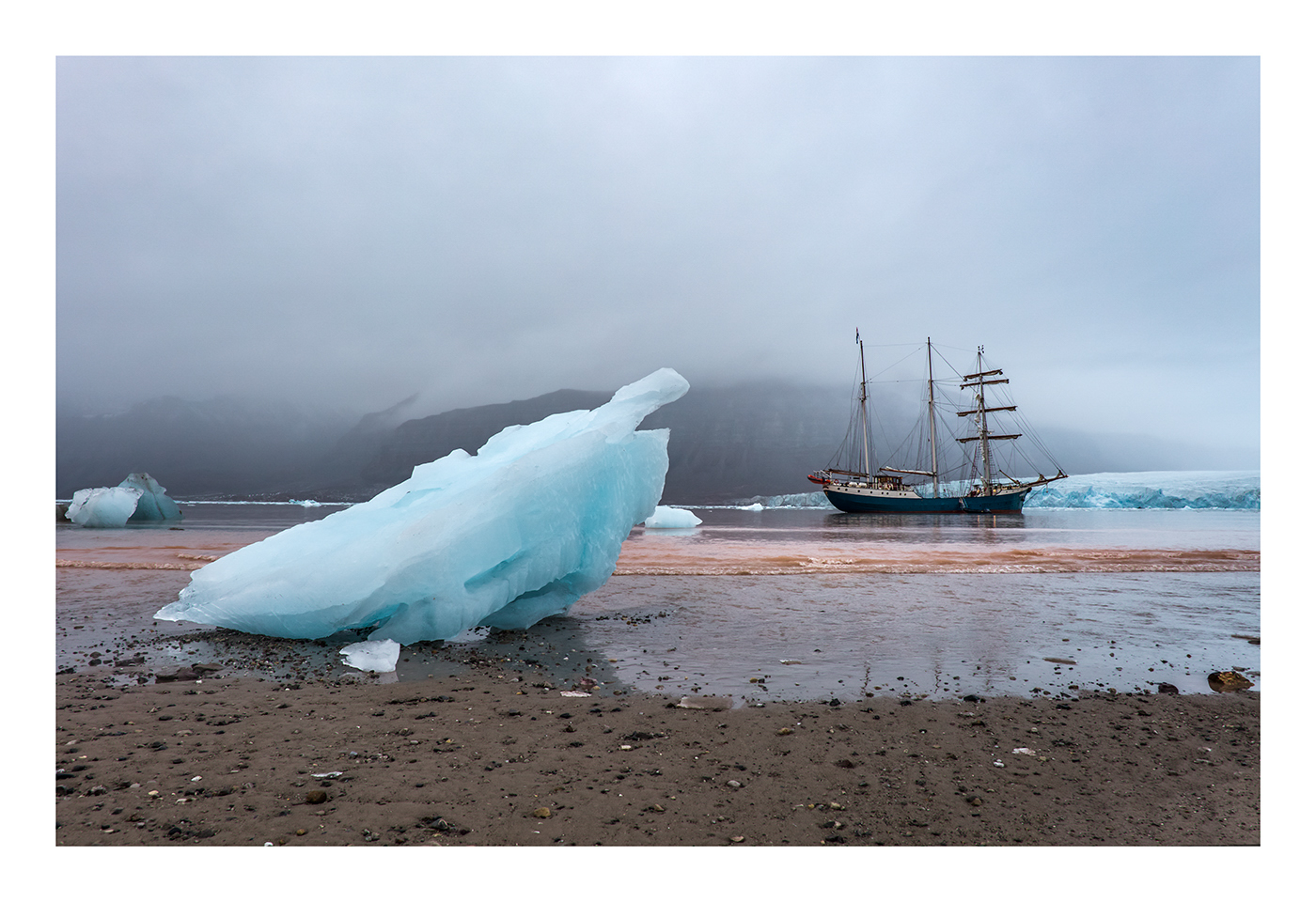
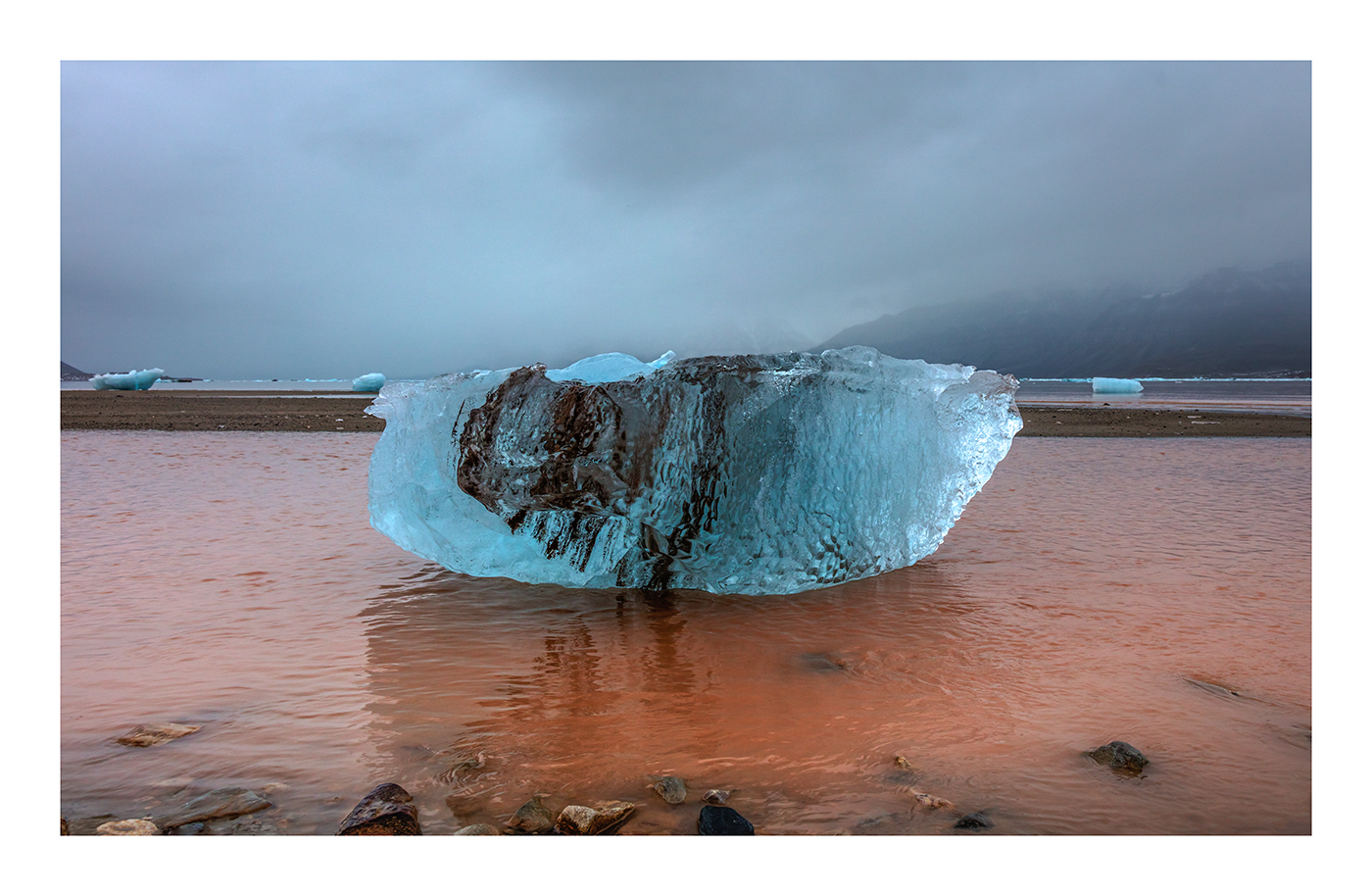

Artist's Statement
Tama Baldwin
The first oil boom took place in the high arctic along the northwestern shores of the Svalbard Archipelago in the early decades of the seventeenth century. Those mountainous islands on the edge of the polar sea were such an unforgiving place they were terra nullius—land claimed by no nation—until the beginning of the 20th century. There is no archeological record of an indigenous people—just traces of summer hunting parties—but those waters were so rich with whales that a small war broke out over the resources. Within a few years hundreds of whalers set out every summer for the short season of work so dangerous they often paid for their own funerals before leaving home, bringing along timber for their coffins for the nearest trees were 1000 miles to the south. By 1637 so many whales had been killed several species were nearly extirpated and the boom was over.
At the beginning of the winter of 2017 I sailed to the northwestern end of the Svalbard Archipelago to photograph the ruins of those17th century whaling stations bringing along with me for reference a series of postcard reproductions of paintings of those sites. When we left port it was the advent of polar night. It was snowing heavily and the window of workable light was short, and within a day was reduced to a dense blue gloaming by heavy rains that stripped all the snow from all the mountains all the way to 80°N. Unwittingly we had sailed into the heart of a climate change event that took even the most jaded of polar researchers by surprise. Temperatures at the North Pole were soaring, triggering mudslides and glacial surges. Some of the images in Polar Eve are direct reproductions of the scenes portrayed in those 18th and 19th century paintings. Others are more obliquely documentary capturing the climatic drama of global warming—the bitter end, some would argue, of the Industrial Revolution.


